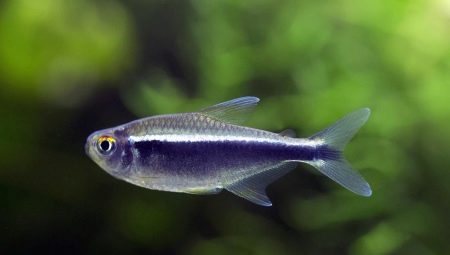Flocks of small neon can be watched for hours - this sight calms and fascinates. Such inhabitants of home reservoirs are peaceful, easily get along with other small residents of aquariums. In order for the neons to feel good and to please the owners, it is necessary to choose the right water house for them and follow the maintenance rules.
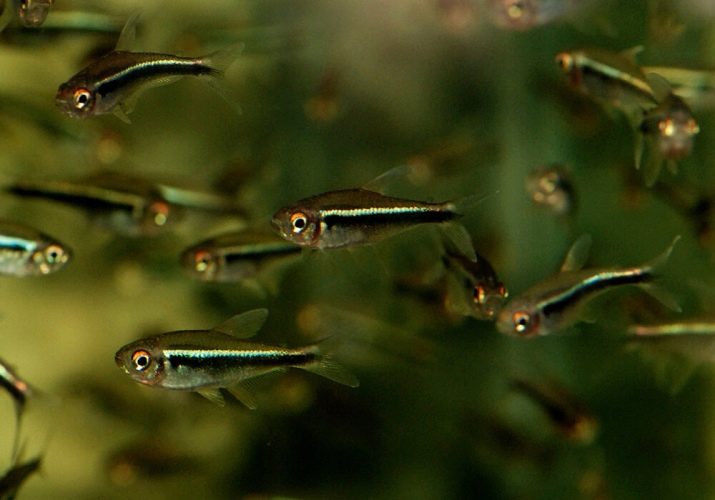
Aquarium Requirements
One fish should have at least 1.5 liters of the total water volume, and if the pond is not supplied with additional air - all 3. The smallest allowable volume of the aquarium in which you can contain neon - 10 liters. In such a free fit 4 individuals.
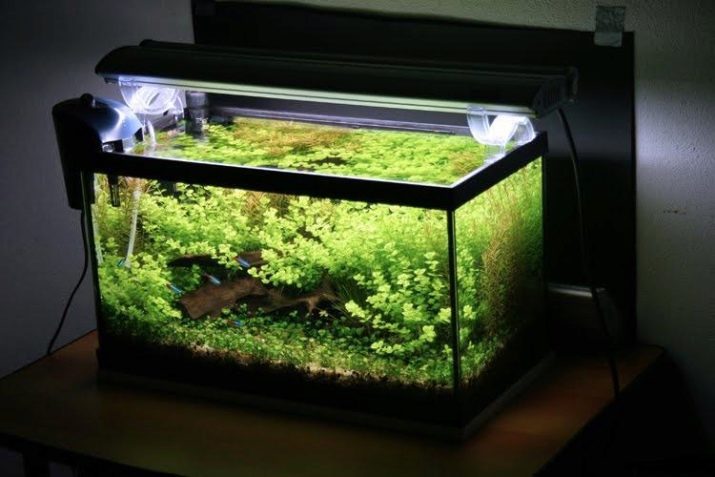
Because neons prefer to keep in packs, it is desirable for a small company to provide a reservoir of liters of at least 30. It is necessary that in such an aquarium there should be enough vegetation of dark green color, which is better to place at the back wall of the tank. Against this background, neons look very picturesque.
Also, when arranging the aquarium, they create shading zones that are found in the natural aquatic environment of such fish. At the same time, there should be a lot of free space for movement.
Since the fish do not jump out of the water, covering the aquarium is optional. The temperature of the liquid is maintained at a level of 18-20 degrees. The acidity of water is between 5.5 and 7.5 pH.

Under natural conditions, neons are inhabitants of South American rivers with a low level of light and backwaters. When creating conditions in the aquarium, this also needs to be borne in mind.
What and how to feed?
Both dry and live food are suitable for feeding neon.Diet should support diversity. Neons are happy to eat:
- daphnia;
- bloodworm;
- cyclops;
- Artemia.
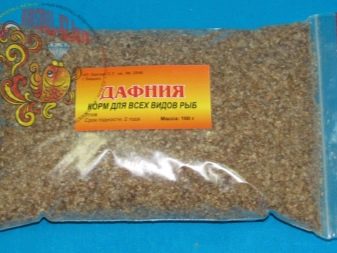
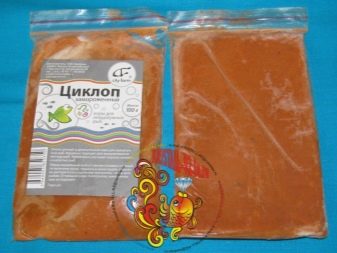
It is better to provide fry with special food intended for this category of fish.
It is advisable to feed these aquarium fish once a day in moderation.so that excess food remains at the bottom. Once a week feeding is even better to skip. It’s only for the health of silent pets - they will not gain weight, as is the case with them, if the owners are too generous in food.
How to care?
Neon's lifespan is largely dependent from water temperature. If it is approximately 18 degrees, the fish will live 4 years. At 22 degrees - a year less, and if you keep it at 27 degrees - only 1.5 years.

So it is better to keep the liquid in a moderately warm form. This is an important part of care.
For fry, you need to create conditions when the temperature is kept at 22 degrees. In this case, the aquatic environment should be replenished with air. You will also have to renew water every day by about one tenth.
As the young shoots grow, the lighting level in the spawning aquarium is raised. The maximum brightness allowed for such fish should be reached by the age of one month. If the water tank is filled with enough light for adult fish earlier, teenage neons will not be able to navigate.
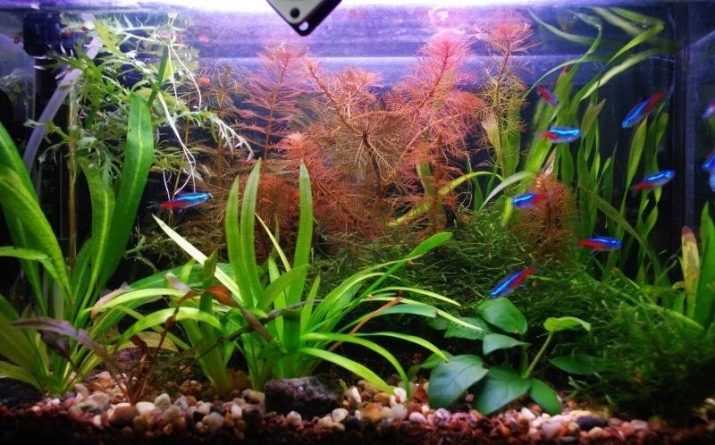
Since the eyesight is not yet very developed in the fry, a small light source is installed in the shaded aquarium, which attracts them to the feeding place.
As the young growth in the spawning tank increases the hardness of the water, adding liquid from the "adult" aquarium.
Breeding
In order to get offspring of neons at home, you must at least understand the gender differences between females and males. The process does not require special manipulations.
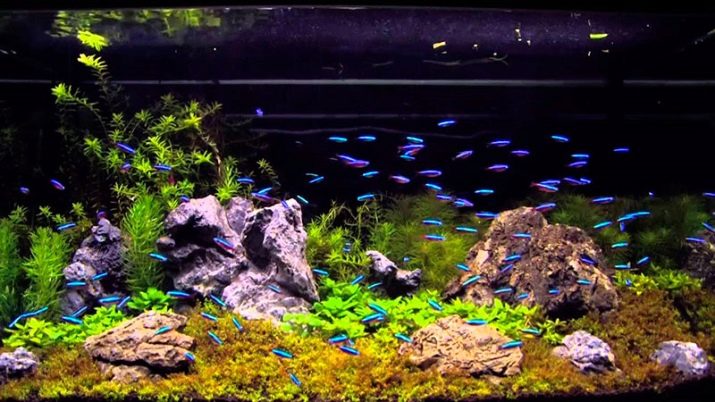
Females of neons are larger in comparison with males (about 0.5 cm longer). Their belly is more prominent than that of the “boys”, and in the middle of the body you can see the bend of the shiny strip characteristic of the appearance of these fish. Males are flatter and with an even sideband without any hint of bends.
At 6–9 months, neons become ready to receive offspring, and individuals aged 10 to 12 months can provide the healthiest. To begin with, future “mothers and fathers” create the most favorable living conditions in a large aquarium.
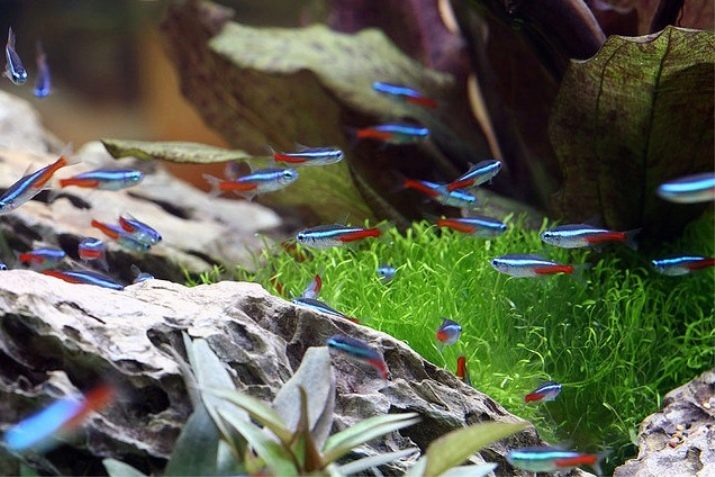
They are provided with a varied menu and the most suitable water temperature. Before spawning, males are separated from females. Feeding during the week is live feed. Water temperature - 20 degrees.
They also prepare an aquarium for spawning. In length, it should be at least 40 cm. There is no soil at the bottom. Instead, a special mesh is installed (for example, a nylon washcloth), and the back and sides of the tank are darkened by installing a substrate of the corresponding color.
The water level in the aquarium is 15-17 centimeters. Distilled water is taken into which a glass of liquid is added from a conventional aquarium in which neons live.
During spawning, fish need water with indicators of 5.5-6 pH. You can bring the condition to the desired level of acidity with the help of store preparations. Some use a decoction of alder cones.
Water temperature - from 22 to 25 degrees. No special lighting - the light must be natural. Fluid disinfection with ultraviolet or ozone is also required.
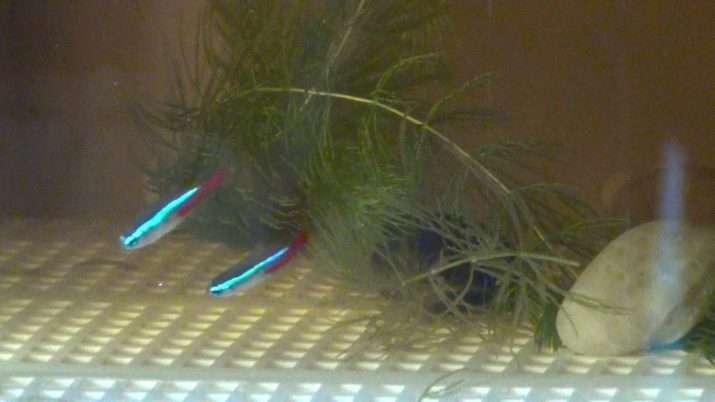
After preparing the aquarium, neons are placed in it. We can proceed from the fact that one male should have 3 males. It is better to transfer fish to a spawning aquarium in the late afternoon. Spawning usually occurs during sunrise, although the result sometimes has to wait 3 days. You do not need to feed neon at this time.
Females toss up to 200 eggs. After this, adult neons are placed in another aquarium so that they do not eat their own offspring, and spawning is protected from the light, because caviar can die under such conditions.
It is advisable not to ignore this capacity in the first 4 hours after spawning. If whitish eggs appear, they must be removed immediately from the aquarium.
Compatible with other fish
Other peaceful inhabitants of the water will come to the company of neon:
- tetra
- Pecilia
- swordsmen;
- poultry
- pulchera;
- flashlights.
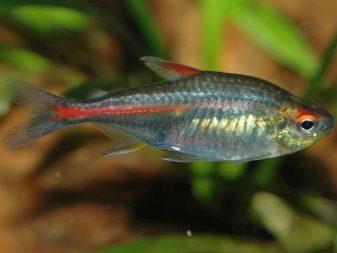

You can not keep neon in the same tank with the warlike and large cloisters of the water world. Neighborhood with:
- goldfish;
- barbs;
- catfish;
- gourami;
- Labeau.
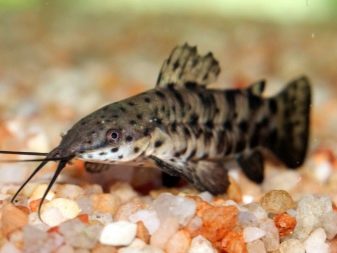
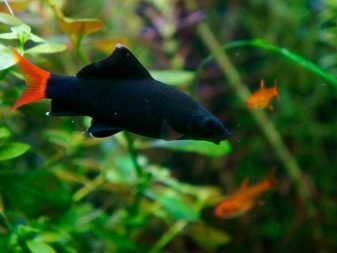
Possible content issues
Stress negatively affects the state of neon. And even an improper water temperature can provoke it. This is possible, for example, if the fish were just bought in a store and placed in a bag with “intermediate” water. It cools for about half an hour.
If the path from the store to the house is not a short one, it is better to make sure that there is a thermal bag at hand. The situation is saved by the foam box. These devices will not allow the liquid with the fish to cool quickly.
After returning home Neon should not be immediately transplanted from the package to the future reservoir. "Temporary housing" is better to put in a regular aquarium with water and wait until the temperature of the liquid in the portable tank and constantly equal. Only after this fish can be released.
You can not keep neon in the aquarium one at a time. A flock should consist of at least 5 individuals, and preferably more. In the group, the fish feel safe and are not stressed. A lonely individual will hide in dark corners in fear of being attacked by a larger tenant of the water house.
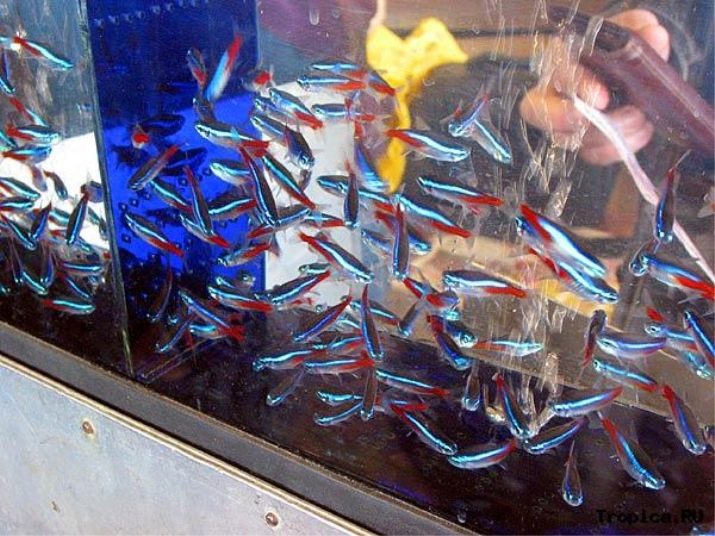
Like all living things, neons are susceptible to various diseases. One of the misfortunes - plistiforosis, which causes a fungus that develops on the bodies of these aquarium inhabitants. It enters the tank itself with the next portion of water, and then is transferred from infected fish to healthy ones.
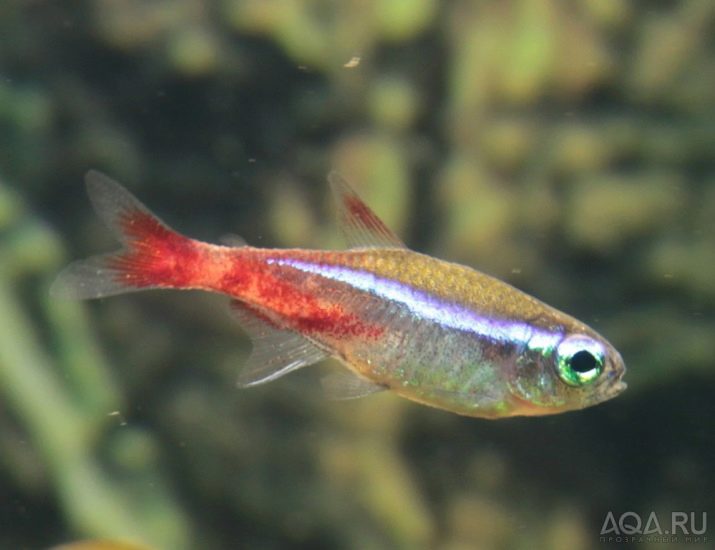
Externally, the disease manifests itself in the form of a loss of color saturation and moving the tail up. It is impossible to treat such a sore. You will have to get rid of the fish, and the aquarium itself must be thoroughly disinfected.
Another neon disease - ichthyophthyroidism, which the fish pick up with ciliates, eating young animals. Ill fish look as if sprinkled with semolina.
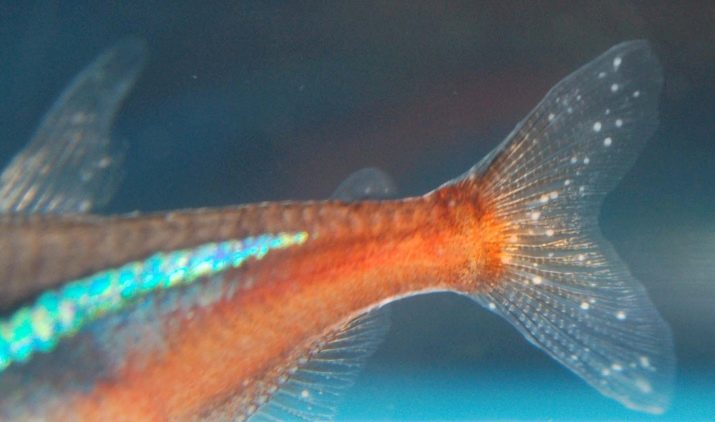
It is not for nothing that ichthyophthyroidism is simply called - semolina.
To get rid of the problem, the temperature in the water tank is increased by a couple of degrees and the supply of oxygen to it is enhanced. Also, special preparations are added to the aquarium.
All about neon aquarium fish see below.
